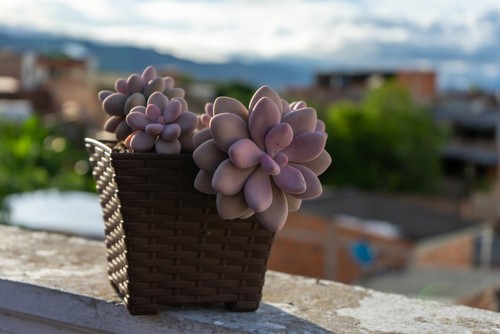Many gardeners often wonder if they can use succulent food for other plants. The short answer is yes, they can. Succulent plant food contains the same primary nutrients as regular plant food, including nitrogen, phosphorus, and potassium, which all plants need to thrive.
While succulent plant food is specifically formulated for succulents, it can also be used for other plants. In fact, when you look at the ingredients list on succulent plant food, you’ll notice that it’s very similar to regular plant food.
The only difference is that succulent plant food may have a higher concentration of certain nutrients to meet the unique needs of succulents.
It’s important to understand the role of nutrients in plant growth, the different types of fertilizers, and the specific needs of different types of plants before using succulent plant food for other plants. However, when used properly, succulent plant food can be a great alternative fertilizer option for a variety of plants.
Key Takeaways
- Succulent plant food contains the same primary nutrients as regular plant food and can be used for other plants.
- Understanding the role of nutrients in plant growth and the specific needs of different types of plants is important before using succulent plant food for other plants.
- Succulent plant food can be a great alternative fertilizer option for a variety of plants when used properly.
See these other related posts:
- Can I Use Succulent Fertilizer for Other Plants?
- Can I Use Play Sand for Plants?
- Can I Use Orchid Potting Mix for Other Plants?
Understanding Plant Food and Succulents
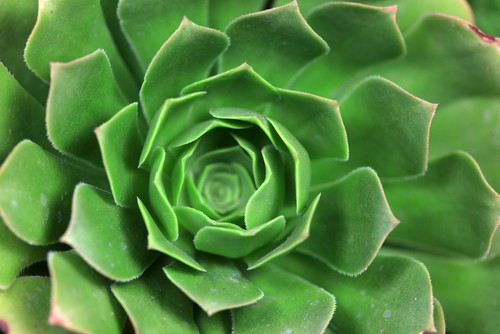
Plant food is essential for the growth and development of all plants, including succulents. It provides the necessary nutrients that plants need, such as nitrogen, phosphorus, and potassium, to thrive and produce healthy foliage, flowers, and fruits.
Succulents, like other plants, require a balanced diet of nutrients to grow and flourish. They need a fertilizer that is high in phosphorus and low in nitrogen and potassium. This is because succulents are adapted to grow in nutrient-poor soil and do not require as much nitrogen and potassium as other plants.
Succulent plant food is specially formulated to meet the unique needs of succulents. It contains a higher concentration of phosphorus and lower levels of nitrogen and potassium compared to regular plant food. Using succulent plant food will provide your succulents with the necessary nutrients they need to thrive.
It is important to note that succulent plant food can also be used on other plants. All plants require the same primary nutrients to grow and flourish, and succulent plant food contains these essential nutrients. When using succulent plant food on other plants, it is important to follow the instructions on the label and adjust the dosage accordingly.
When caring for succulents and other plants, it is important to provide them with the right amount of plant food at the right time. Over-fertilizing can damage the plant, while under-fertilizing can result in stunted growth and poor health.
It is recommended to fertilize succulents once a month during the growing season and reduce the frequency during the dormant season.
The Role of Nutrients in Plant Growth
Plants require nutrients to grow and develop. The three primary macronutrients that plants need are nitrogen (N), phosphorus (P), and potassium (K), which are commonly referred to as NPK. These nutrients are essential for plant growth, and they play a vital role in the development of leaves, stems, and roots.
Nitrogen is necessary for the production of chlorophyll, which is responsible for the green color in plants. It is also essential for plant growth and development, and it helps plants produce new leaves and stems.
Phosphorus is necessary for the development of strong roots, and it helps plants produce flowers and fruit. Potassium helps plants regulate water balance and is essential for the development of strong stems.
In addition to NPK, plants also require other macronutrients, such as calcium, magnesium, and sulfur, which are essential for plant growth and development. These nutrients are typically found in soil, and they are often added to soil in the form of fertilizers or compost.
The ratio of NPK in fertilizers is an essential factor to consider when choosing a fertilizer. The NPK ratio is usually displayed on the packaging of the fertilizer and indicates the percentage of each nutrient in the fertilizer. For example, a fertilizer with an NPK ratio of 10-10-10 contains 10% nitrogen, 10% phosphorus, and 10% potassium.
In addition to macronutrients, plants also require micronutrients, such as iron, copper, and zinc, which are essential for plant growth and development. These micronutrients are typically found in soil, and they are often added to soil in the form of fertilizers or compost.
Microbes also play a vital role in plant growth and development. They help break down organic matter in the soil, making nutrients more available to plants. They also help fix nitrogen in the soil, which is essential for plant growth.
Different Types of Fertilizers
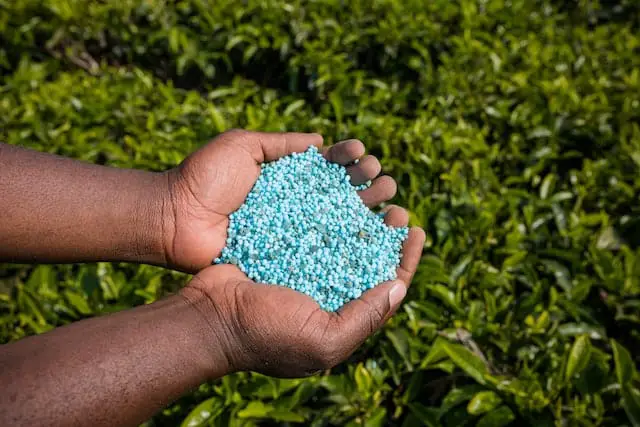
When it comes to fertilizing plants, there are two main types of fertilizers: organic and synthetic. Organic fertilizers are derived from natural sources, such as animal waste, plant matter, and minerals. On the other hand, synthetic fertilizers are man-made and contain a combination of nutrients in specific ratios.
Organic Fertilizers
Organic fertilizers are preferred by many gardeners because they are environmentally friendly and promote soil health. They contain a variety of nutrients that are released slowly over time, which means they don’t burn plants like synthetic fertilizers can. Some examples of organic fertilizers include compost, manure, bone meal, and fish emulsion.
When it comes to succulent and cactus plants, organic fertilizers are a great option because they provide a balanced amount of nutrients without overloading the plants with nitrogen.
Miracle-Gro Succulent Plant Food is a popular organic fertilizer that is specifically designed for succulents and cacti. It contains a balanced mix of nitrogen, phosphorus, and potassium, as well as other essential micronutrients.
Synthetic Fertilizers
Synthetic fertilizers are made from chemical compounds and are designed to provide plants with a specific balance of nutrients. They are often cheaper than organic fertilizers and can be applied more quickly and easily. However, they can also be harmful to the environment if not used properly.
When using synthetic fertilizers on other plants, it’s important to choose the right type and apply it at the correct rate. All-Purpose Plant Food and Miracle-Gro Indoor Plant Food are two examples of synthetic fertilizers that can be used on a wide variety of plants.
They contain a balanced mix of nutrients that can help plants grow quickly and produce more blooms or fruit.
It’s important to note that synthetic fertilizers can be more prone to leaching, which means they can wash away with rain or irrigation and end up polluting nearby water sources. Slow-release fertilizers are a good option for those who want the convenience of synthetic fertilizers but also want to minimize the risk of environmental damage.
These fertilizers release nutrients slowly over time, which reduces the amount of runoff and waste.
Understanding Soil and Watering Needs
When it comes to using succulent plant food for other plants, it’s important to understand the soil and watering needs of different plants.
1. Soil
Different plants have different soil requirements. Houseplants are typically grown in potting soil that is high in organic matter, while succulents are typically grown in sand or gravel. Succulent plant food is designed to nourish the roots of succulent plants, which have adapted to grow in soil that is low in nutrients.
2. Watering
The watering needs of different plants also vary. Succulents are adapted to survive in arid environments and can go long periods of time without water. Houseplants, on the other hand, require more frequent watering. When using succulent plant food on other plants, it’s important to consider their watering needs and adjust accordingly.
3. Potting Mix
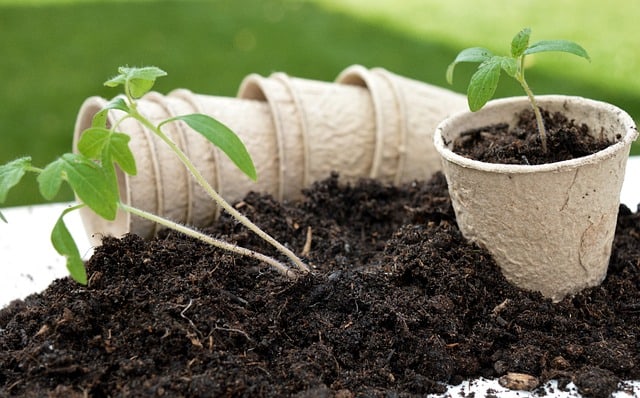
The potting mix used for different plants can also affect their nutrient requirements. Succulents are typically grown in a mix of sand, perlite, and peat moss, which allows for good drainage and aeration.
Houseplants, on the other hand, are often grown in a mix of soil, peat moss, and perlite. When using succulent plant food on other plants, it’s important to consider the type of potting mix they are grown in and adjust accordingly.
4. Drainage Hole
The presence or absence of a drainage hole in the plant pot can also affect the nutrient requirements of different plants. Succulents require good drainage to prevent root rot, so they are typically grown in pots with drainage holes.
Houseplants can be grown in pots with or without drainage holes, depending on their watering needs. When using succulent plant food on other plants, it’s important to consider the presence or absence of a drainage hole and adjust accordingly.
5. Perlite and Peat Moss
Perlite and peat moss are commonly used in potting mixes for both succulents and houseplants. Perlite helps to improve drainage and aeration, while peat moss helps to retain moisture. When using succulent plant food on other plants, it’s important to consider the type and amount of perlite and peat moss in the potting mix and adjust accordingly.
Alternative Fertilizer Ingredients
There are many alternative fertilizer ingredients that can be used besides succulent plant food. These ingredients can provide the necessary nutrients for other types of plants to thrive. Here are some common ingredients that can be used as an alternative to succulent plant food:
- Worm Castings: Worm castings are rich in nutrients and beneficial microorganisms that can improve soil health. They contain high levels of nitrogen, phosphorus, and potassium, which are essential for plant growth.
- Manure Tea: Manure tea is a liquid fertilizer made from steeping manure in water. It contains high levels of nitrogen and other nutrients that can help plants grow. However, it should be used with caution as it can burn plants if not diluted properly.
- Epsom Salt: Epsom salt is a great source of magnesium and sulfur, which are essential for plant growth. It can be used as a foliar spray or added to the soil to improve nutrient uptake.
- Eggshells: Eggshells are a great source of calcium, which is essential for plant growth. They can be crushed and added to the soil to improve soil health and nutrient uptake.
- Fish Emulsion: Fish emulsion is an organic fertilizer made from fish waste products. It contains high levels of nitrogen and other nutrients that can help plants grow. It can be used as a foliar spray or added to the soil to improve nutrient uptake.
- Eggshell Tea: Eggshell tea is a liquid fertilizer made from steeping eggshells in water. It contains high levels of calcium and other nutrients that can help plants grow. It can be used as a foliar spray or added to the soil to improve nutrient uptake.
- Calcium: Calcium is essential for plant growth and can be found in many different forms, including limestone, gypsum, and bone meal. It can be added to the soil to improve soil health and nutrient uptake.
- Humic Acid: Humic acid is a natural soil conditioner that can improve soil health and nutrient uptake. It can be found in many different forms, including compost and peat moss.
- Manure Tea Bags: Manure tea bags are an excellent soil amendment that can provide nutrients to plants. They should be steeped in water and then used to water plants regularly.
Using Succulent Food for Other Plants
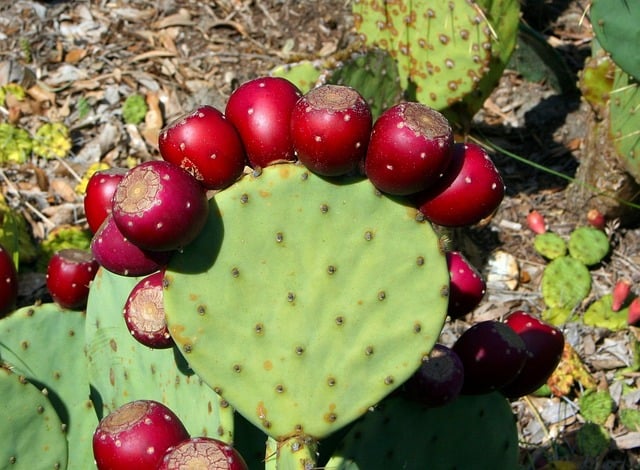
Succulent food is a type of plant food that is designed to provide the necessary nutrients to succulent plants. However, the question arises whether it is safe and effective to use succulent food for other plants as well. The answer is yes, it is safe and versatile to use succulent food for other plants, provided that it is used correctly.
All plants require the same primary nutrients to thrive, which are nitrogen, phosphorus, and potassium. Succulent food is made with combinations of these three (NPK) ingredients, as well as secondary nutrients. When using succulent food for other plants, it is essential to ensure that the concentration of these nutrients is suitable for the specific type of plant.
It is crucial to use proper plant food for each plant variety to ensure that it receives the right nutrients it needs. Succulent food is safe to use for other plants, but it should not be the only source of nutrients for those plants. It is recommended to use a balanced fertilizer that contains all the necessary nutrients in the correct proportions.
When using succulent food for other plants, it is essential to follow the manufacturer’s instructions carefully. Over-fertilizing can be harmful to plants and cause nutrient burn, which can be detrimental to plant health. It is best to start with a small amount of succulent food and gradually increase the concentration as needed.
Caring for Specific Types of Plants
Cacti and Succulents
Cacti and succulents are low maintenance plants that can be grown both indoors and outdoors. They are desert plants that require little water and can survive in hot and dry environments.
When it comes to fertilizing cacti and succulents, it is important to use a fertilizer that is specifically formulated for these types of plants. Succulent plant food can be used on cacti and succulents, as they require similar nutrients to thrive.
When using succulent plant food on cacti and succulents, it is important to dilute the fertilizer to half the recommended strength. Overfeeding these plants can lead to root burn, which can cause the plant to die. It is also important to fertilize cacti and succulents during their growing season, which is typically in the spring and summer months.
Houseplants
Houseplants come in a variety of shapes and sizes, and each type of plant has its own specific care requirements. When it comes to fertilizing houseplants, it is important to use a fertilizer that is appropriate for the specific type of plant.
For example, plants with broad leaves, such as the jade plant, require a fertilizer that is high in nitrogen, while plants with thin leaves, such as the aloe plant, require a fertilizer that is high in phosphorus.
When using succulent plant food on houseplants, it is important to follow the instructions on the label carefully. Overfeeding houseplants can lead to a buildup of salts in the soil, which can cause root burn and damage the plant. It is also important to fertilize houseplants during their growing season, which is typically in the spring and summer months.
Outdoor Plants
Outdoor plants come in a variety of shapes and sizes, and each type of plant has its own specific care requirements.
When it comes to fertilizing outdoor plants, it is important to use a fertilizer that is appropriate for the specific type of plant. For example, plants that require a lot of nitrogen, such as grass, require a fertilizer that is high in nitrogen, while plants that require a lot of phosphorus, such as flowering plants, require a fertilizer that is high in phosphorus.
When using succulent plant food on outdoor plants, it is important to dilute the fertilizer to half the recommended strength.
Overfeeding outdoor plants can lead to a buildup of salts in the soil, which can cause root burn and damage the plant. It is also important to fertilize outdoor plants during their growing season, which is typically in the spring and summer months.
Potential Risks and Diseases

While using succulent plant food on other plants is generally safe, there are still some potential risks and diseases that should be considered.
Overfeeding is one of the most common problems that can occur when using plant food. This can lead to nutrient burn, which can cause the tips of leaves to turn brown and curl up. To avoid this, it’s important to dilute the plant food and follow the instructions carefully.
Another potential risk is the spread of diseases or pests. If the succulent plant food is contaminated with germs, it can easily spread to other plants, causing them to become infected. Additionally, aphids and mealybugs are common pests that can be attracted to plants that are overfed or have too much nitrogen.
To prevent the spread of diseases and pests, it’s important to keep plants healthy and avoid overfeeding. If a plant does become infected, it’s important to isolate it and treat it with the appropriate pesticide or fungicide.
Conclusion
In conclusion, using succulent plant food on other plants is possible and can be beneficial. All plants need the same primary nutrients to thrive, which are nitrogen, phosphorus, and potassium. Succulent plant food is made with a combination of these three ingredients, as well as secondary nutrients, making it a suitable option for other plants.
However, it is essential to note that succulent plant food is specifically designed to meet the unique needs of succulents. Other plants may require different nutrient ratios, and using succulent plant food exclusively may not provide adequate nutrition for them. It is always best to check the nutrient requirements of the plant before using any fertilizer.
Additionally, it is crucial to follow the instructions on the label carefully. Over-fertilizing can harm plants, and using too much succulent plant food on other plants may cause nutrient imbalances or other issues. It is recommended to start with a small amount and gradually increase the dosage if necessary.
Frequently Asked Questions
Can Succulent Food be Used for Other Types of Plants?
Yes, succulent food can be used for other types of plants. All plants require the same primary nutrients to thrive, which include nitrogen, phosphorus, and potassium. Succulent plant food is made up of these nutrients, as well as secondary nutrients, which are essential for the growth of all plants.
Is it Safe to Use Succulent Fertilizer on Indoor Plants?
Yes, it is safe to use succulent fertilizer on indoor plants. However, it is important to follow the instructions on the label carefully to avoid over-fertilization, which can damage the plants. It is also recommended to dilute the fertilizer to half strength before applying it to indoor plants.
Can Succulent Plant Food be Used on Cacti?
Yes, succulent plant food can be used on cacti. Cacti are succulent plants and require the same nutrients as other succulents. However, it is important to choose a fertilizer that is specifically formulated for cacti and succulents to ensure that it provides the right balance of nutrients.
Is There a Difference Between Succulent and Regular Plant Fertilizer?
Yes, there is a difference between succulent and regular plant fertilizer. Succulent plant food is formulated to provide the specific nutrients that succulent plants need to thrive, such as a higher ratio of potassium to nitrogen. Regular plant fertilizer, on the other hand, is formulated for a wider range of plants and may not provide the right balance of nutrients for succulents.
Can Succulent Fertilizer be Used for Orchids?
No, succulent fertilizer should not be used for orchids. Orchids require a specific type of fertilizer that is formulated for their unique nutrient needs. Using succulent fertilizer on orchids can lead to over-fertilization or nutrient deficiencies, which can harm the plants.
Is it Recommended to Use Succulent Food for Aloe Plants?
Yes, succulent food is recommended for aloe plants. Aloe plants are succulent plants and require the same nutrients as other succulents. Using a fertilizer that is specifically formulated for succulents, such as succulent plant food, can help promote healthy growth and flowering in aloe plants.

Hey, I’m Lisa and I’ve been an avid gardener for over 30 years. I love writing, talking and living in the garden! Feel free to connect with me on my socials below

